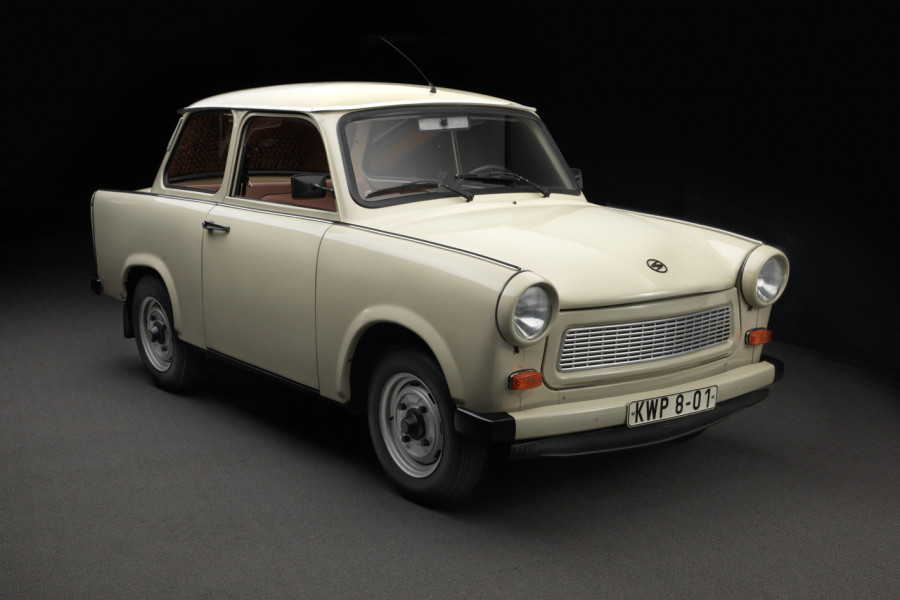1989 Trabant Type P601L

The descriptions of the Classic Cars in the Directory were partly generated or supplemented with the help of artificial intelligence (AI). The content may occasionally not always be entirely accurate or factually correct despite careful checking.
{"Description":"The Trabant Type P601L 1989 is a car that was designed and manufactured in East Germany during the Cold War. This unique car was created to provide affordable transportation for the average person, but it also came with a range of interesting technical features that set it apart from other vehicles on the market.\n\nStarting with the engine, the Trabant Type P601L 1989 was powered by a two-stroke engine that had a displacement of 594cc. This air-cooled engine was capable of producing up to 26 horsepower and 44 Nm of torque, which was enough to get the car up to a top speed of around 100 km/h. The engine was also fitted with a multi-point fuel injection system, which helped to improve fuel efficiency and reduce emissions.\n\nThe Trabant Type P601L 1989 was also equipped with a four-speed manual transmission, which provided smooth and precise shifting between the gears. The car featured a front-wheel-drive system, which helped to improve traction on slippery or wet roads. The suspension system included MacPherson struts at the front and a coil-sprung trailing arm rear suspension, which provided a comfortable ride even over rough terrain.\n\nOne of the most interesting technical features of the Trabant Type P601L 1989 was its body. The car was made out of a hard plastic material called Duroplast, which was created by combining resin with cotton waste. This material was incredibly lightweight and helped to reduce the car's overall weight, which contributed to its excellent fuel efficiency. The body was also designed to be aerodynamic, which further improved the car's efficiency.\n\nInside, the Trabant Type P601L 1989 was relatively basic, but it still came with some interesting features. The car had a simple dashboard with a speedometer, fuel gauge, and other basic indicators. The seats were covered in a durable fabric material, which held up well over time. The car also had a heating system, which was necessary during the cold East German winters.\n\nOverall, the Trabant Type P601L 1989 was a unique and interesting car that was built with a range of technical features that helped to set it apart from other vehicles of its time. From its Duroplast body to its multi-point fuel injection system, this car was a true testament to the ingenuity and creativity of its designers and engineers.","Milestone":"- 1957: The Trabant brand is established in East Germany.\n- 1963: The Trabant 601 is introduced.\n- 1973: The Trabant 601s is released, featuring a new engine.\n- 1989: The Trabant Type P601L is produced, featuring improved safety features and an updated design.\n- November 9, 1989: The Berlin Wall falls, leading to a increase in demand for Trabants as East Germans seek to purchase cars before the country's reunification.\n- 1990: The Trabant factory is privatized and changes ownership, leading to a decrease in production in the following years.\n- 1991: The Trabant is phased out due to increased competition from foreign car manufacturers and changing consumer preferences.\n- Today: The Trabant remains a cherished cultural symbol for many East Germans, and is often featured in museums and nostalgic events.","Tehnical":"* Manufacturer: VEB Sachsenring Automobilwerke Zwickau \n * Production Years: 1963-1991 \n * Engine Type: 2-stroke, air-cooled \n * Engine Capacity: 599 cc \n * Power Output: 26 horsepower (19 kW) \n * Transmission: 4-speed manual \n * Top speed: 100 km/h (62 mph) \n * Fuel consumption: 7.5 liters/100 km (31 mpg) \n * Body Type: Two-door sedan \n * Weight: 615 kg (1,356 lbs) \n * Dimensions (L×W×H): 3,860 mm × 1,512 mm × 1,435 mm (152 in × 59 in × 56 in) \n * Suspension: Front-wheel independent, rear-wheel dependent \n * Brakes: Front and rear drum brakes \n * Steering: Rack and pinion \n * Tires: 135 SR 13 inch."}
